Quick Definitions:
Fitness: the ability to survive to reproductive age, find a mate, and produce offspring.
Natural Selection: Process by which the best adapted organisms survive and reproduce more often. These adaptations are passed onto the next generation.
Natural Selection occurs when nature favors an organism. This happens when the strongest and “best fit” to survive are able to reproduce. Offspring inherit traits that are good for the species. This process is one part of Darwin’s theory of evolution (along with common descent).
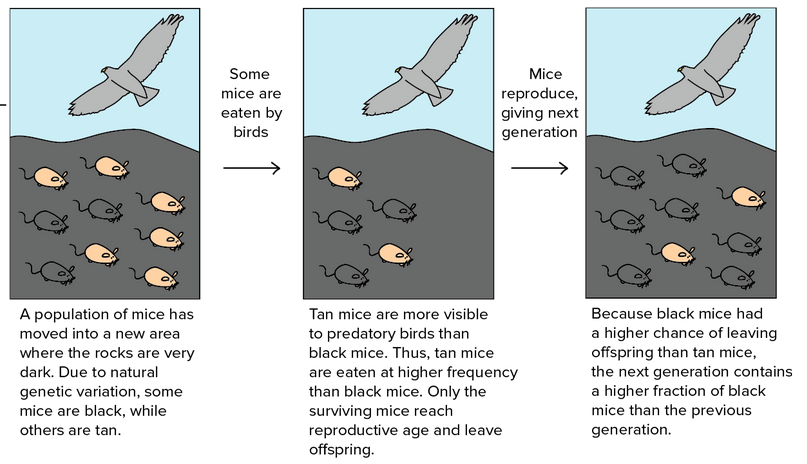
Mechanisms of Natural Selection:
1.Variation
o Within a population, we see a wide variety of traits and differences among the same species.
o All of the traits and phenotypes (expressed characteristics) are due to differences in DNA.
- These differences in DNA arise due to MUTATION. A mutation is any change in an organism’s DNA – it can be negative, positive, or neutral.
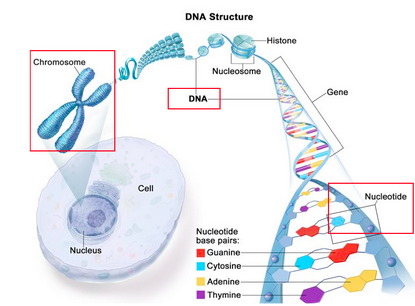
- Mutation is caused by spontaneous switching of nucleotide bases in the DNA.
- Mutation can also be caused by chromosome abnormalities – i.e. missing parts, moved sections, or inability to separate during cell division.
See 2-2 notes for more information.
Variation and Sexual reproduction:
- Sexually reproductive animals have the benefit of a greater genetic diversity.
- An offspring gets one set of chromosomes from the mother and another from the father.
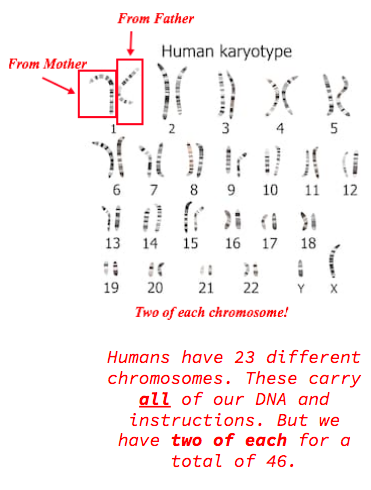
- During meiosis (cell division which makes sperm and eggs with only one set of chromosomes) there are many mechanisms which increase the variation in each sex cell as well. This makes billions of combinations possible for each sperm and egg.
- Without variation, populations could not survive changing environments. Natural selection selects the best adapted to survive leading others to die off. If they all have the same DNA, the population could not survive the same change.
More on meiosis in unit 3!
What happens if there is no variation in a population?
The extinction of the Gros Michel banana. All clones, no diversity, all susceptible to Panama Disease, loss of fitness, death!
2. Overproduction
Organisms instinctively reproduce. This leads to frequent offspring production among organisms (as frequent as their biology allows).
- This leads to more offspring produced then just to “replace” the parents.
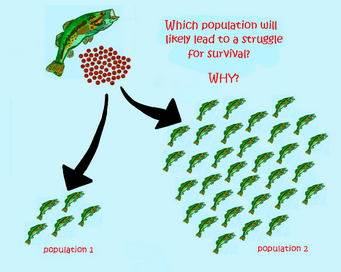
- However, pressures such as environment, predators, etc. lead to the death of many offspring.
- Luckily, overproduction means there is a greater chance of some offspring surviving to reproductive age.
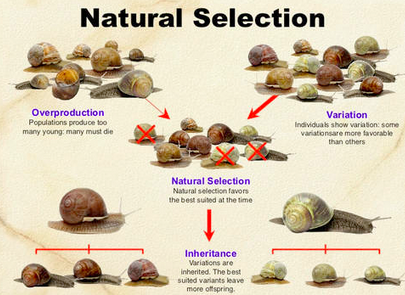
3. Competition
- Limited food, space, water, mates, and niches in each environment.
- Niche –an organism’s role in the ecosystem. It includes its habitat (where it lives), what it eats, what eats it, and how it behaves!
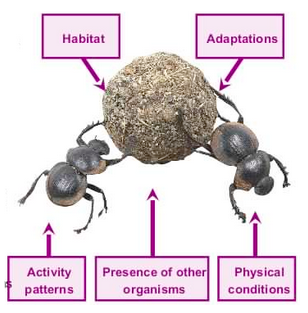
- This means organisms within a species must compete to survive. If they are not strong enough, they will be out competed and can die.
- There is also interspecies competition – different species competing over the same resources. Leads to extinction of one unless they can adapt.
- This is why invasive species are such a problem – they can out compete native species.
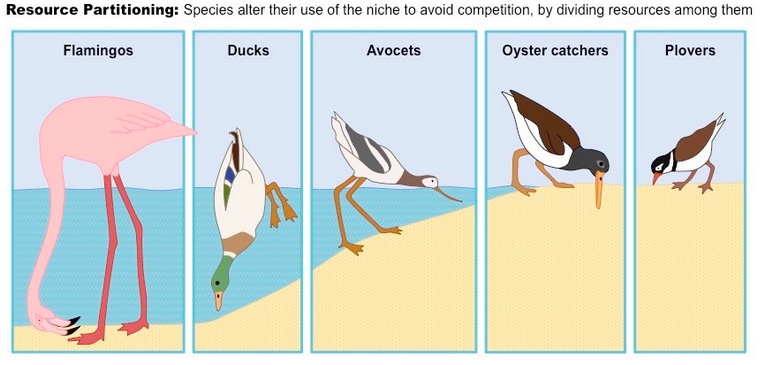
Think about the Battle of the Beaks activity. When their was only one food source, you had to compete and some beaks were much better for certain foods. When all foods were present, many beaks targeted the food they were best at.
4. Survival of the Fittest
- More variation means some organisms in a population will be better suited to survive and others worse.
- The traits that help an animal survive in its environment is called an adaptation.
- The better adapted organism, the more likely it will survive and pass on its DNA
Fitness is all about reproductive ability!
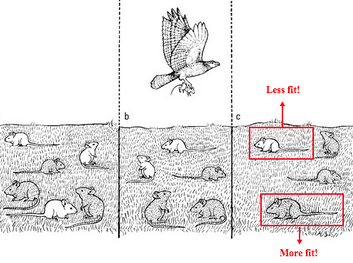
The above picture shows that the white mouse is less fit. It is less likely to survive to reproductive age or produce many offspring due to the predator. Thus, natural selection will select and favor the darker mouse which is more fit.
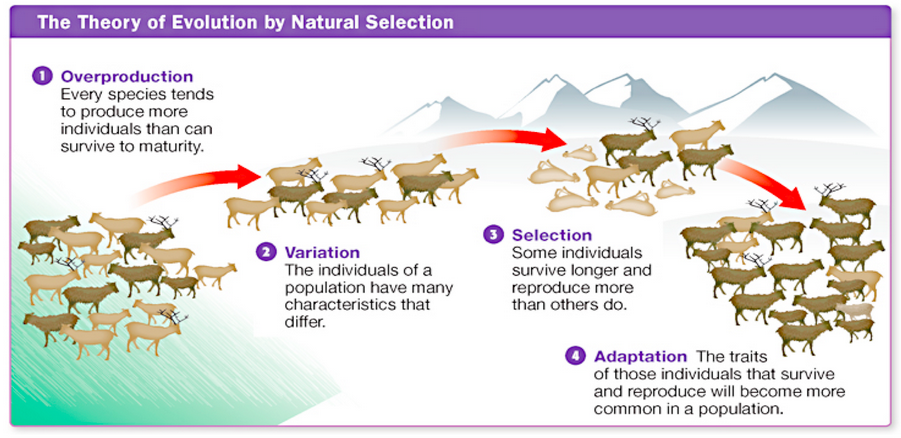
B. Adaptations
Adaptation: Any feature that helps an organism survive within its niche. It becomes common in a population because it provides an improved function or benefit.
This is tied to natural selection as the best traits (adaptations) are selected to be passed on while “unfit” traits disappear.
Three types of adaptations:
Structural/Physical Adaptations – Changes in an animal’s body to help it survive. (ex: ducks having webbed-feet to help with swimming.)
Physiological Adaptations – Internal and/or cellular features of an organism that enable them to survive in their environment (ex: snakes produce poisonous venom to ward off predators and to capture prey).
Behavioural adaptations – Changes in an animal’s actions to help it survive. (ex. Geese flying south for the Winter.)
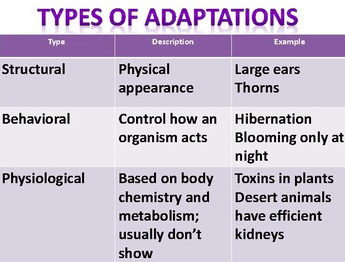
Adaptations that are no longer “adaptations”
Vestigial Structures: a feature that was an adaptation for the organism’s ancestor, but that evolved to be non-functional because the organism’s environment changed.
Examples of vestigial structures:
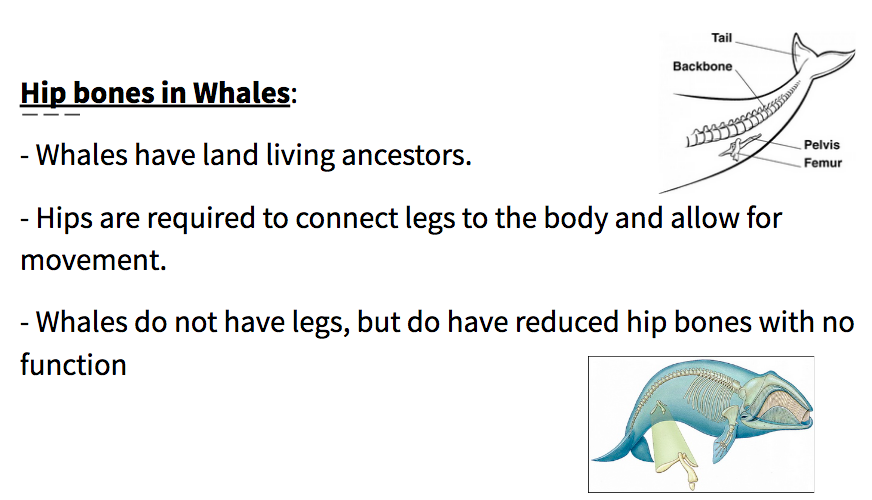
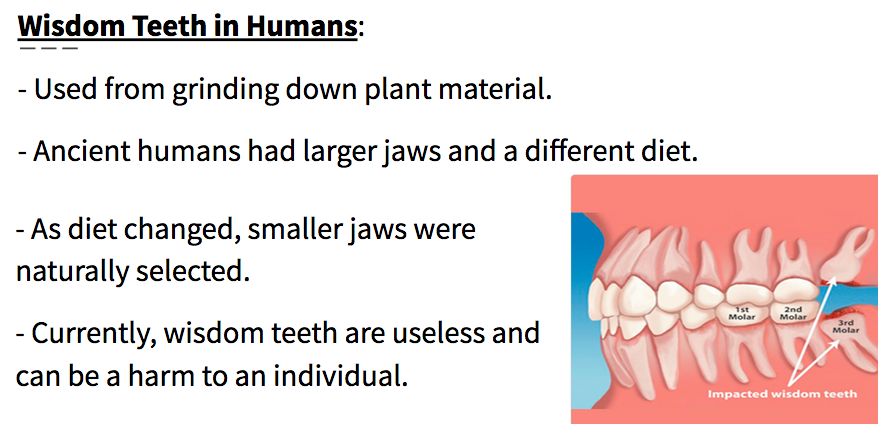
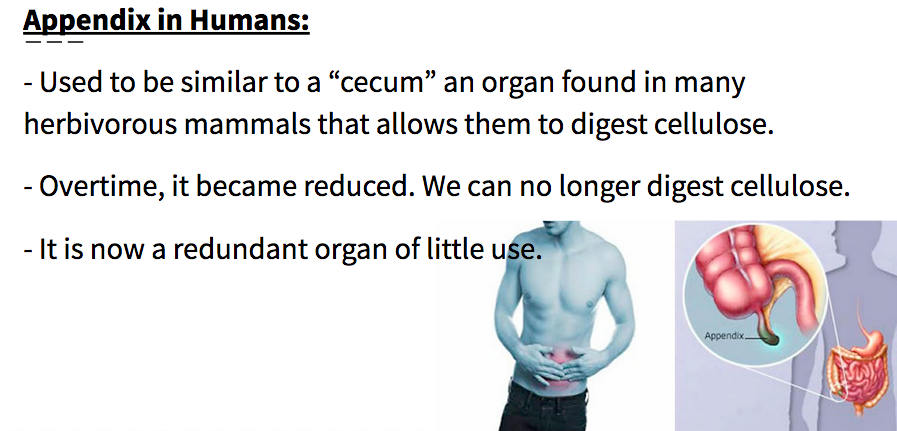
C. Selective Pressures
Selective pressures: External forces which affect an organism’s ability to survive in a given environment.
- Selection pressures can be negative (decreases the fitness of a trait) or positive (increases the fitness of a trait)
- Examples of selection pressures:Predators, availability of resources, disease, accumulation of wastes, abiotic factors (climate, CO2 levels), natural disasters.
Looking at populations – we can see how populations shift based on pressure. The group shows the variation in a population and the effect of pressure on populations
Directional Selection: The pressures favor one “extreme” of the trait in a population.
Stabilizing Selection: If conditions stable for a long time, pressure favors “moderates”
Disruptive Selection: The pressure favors both extremes as they both give benefits
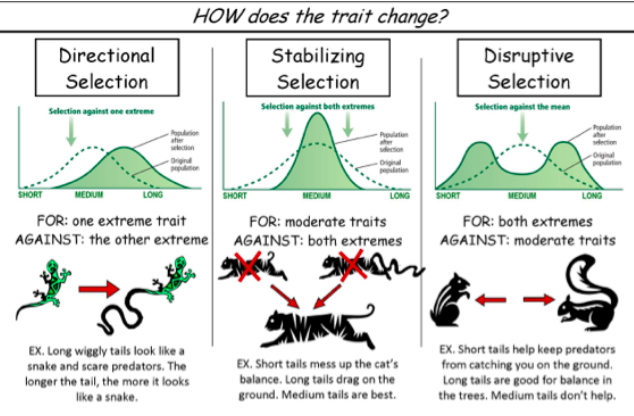
Think: We learned about sickle cell anemia and allelic frequencies in Africa. Answer the following questions regarding the presence of the sickle cell allele and is prevalence in malaria zones:
- What type of selection is occurring at malaria zones?
- Describe sickle cell anemia in terms of adaptation and natural selection.
Comments by shaun pletsch